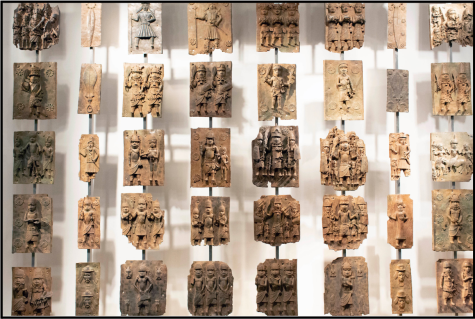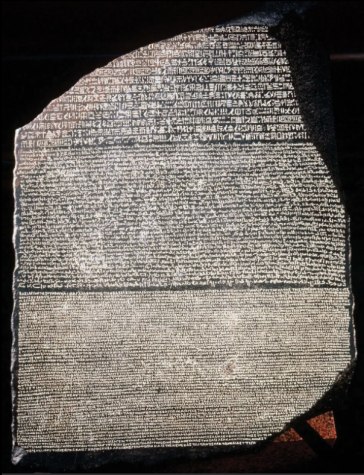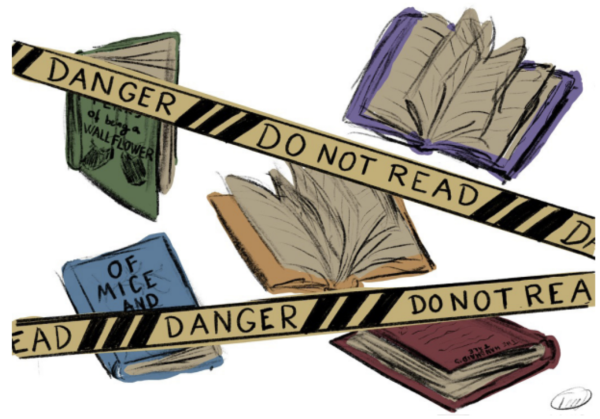Stolen History
Being civilised is one of the many qualities that humankind has ever had that separates us from any other animal. What made us civilised was our ability to think beyond survival, and developing many key characteristics that made us civilised- the important ones mainly being curiosity and creativity. These characteristics led to us having many different philosophies that describe the nature of the world and how it works. We manifested these philosophies into traditions, customs, beliefs, and many types of artforms like art, music, dances, cooking, literature, sculptings and many more. The collection of all these forms of manifestation is culture. To keep a certain civilization alive, it is very important for the civilization to preserve its culture by preserving the priceless cultural artefacts, art pieces, and art forms that it has. Throughout history, there have been many ancient civilisations, each with their philosophies, discoveries and cultures to be cherished. Each has had artefacts, art pieces and art forms that can tell their story, which adds up to the bigger picture and our understanding of how the world was. While preserving an artform is very important, preserving the precious artefacts is the most important, as it contains historical value and is a constant maintenance. A big question that now arises is: ‘ Who should be responsible for preserving these artefacts?’. Ideally they belong in the custody of the government that runs the land, the artefact originates, so if an army of Terracotta soldiers were to be found in an excavation site in China, then they would belong to the Chinese government and it is the responsibility for the chinese government to now preserve them and use them to understand the world back then. While this is certainly the case today, a long time ago, when the European countries like Great Britain, France, and Germany colonised the world, they would plunder many resources, money and even cultural artefacts that they would excavate themselves or have already been excavated. Many artefacts were simply stolen by certain lords and businessmen, which were then sold to the government. The British Museum is the biggest history museum in Europe which covers more than 200,000 years of human history, contains 27 million cultural artefacts and many of which are stolen by the British like the Rossetta stones, produced in Egypt, the parthenon sculptures, produced in ancient Greece, or Benin Bronzes, a collection of artefacts that were produced in the ancient kingdom of benin present day Nigeria. Here is where the main question lies, ‘Should the stolen artefacts be returned or be kept in the biggest history museum where they are best preserved and where they are the safest?’.

The Benins were an ancient tribe in Nigeria that made many important artefacts that at the time were used for religious rituals. As per Chika Okeke Agulu, a Nigerian art historian who is a professor at Princeton University, their artefacts told their history of their kingdoms, how they developed and the political and social life of the king and their people. In the 1800s, the European countries would soon colonise parts of Africa, in search of more power and influence on the world. The Britishers, in this case, got to colonise and rule the Benin kingdom. In 1897, the Britishers had a trade disagreement with the Benin kingdom, who refused to comply with the Britishers trade agreement. This led to the Benin disaster, where the Benin soldiers killed a few British guards. This gave the britishers reason to conquer the city, and burn it to the ground. While conquering Benin, they raided the Benin palace and plundered thousands of cultural artefacts, with plans of selling them and earning a profit to counter their major costs they encountered. IN 1950, when Nigeria got its independence, it had already lost most of its cultural artefacts to Germany, British, France and many more European countries. Even today, after many requests to return the Benin artefacts illegally stolen, the British government has declined all those requests.
The Benin Bronzes were an example of the British museum of history stealing artefacts from a country they colonised. There are many artefacts that they acquired from the countries they did not colonise. One such example is the Rosetta stone, from the Egyptia

n Empire. The Rosetta stone is said to be the most visited piece in the British Museum, and after the 200-year anniversary of the decipherment of hieroglyphics, thousands of Egyptians are demanding the stone’s return. In 1799, when Napoleon Bonaparte conquered Egypt, the French had possession of the Rosetta Stones. In 1801, when the British defeated the French and signed a treaty, from which they took possession of the Rosetta stones. As per Monica Hanna dean at the Arab Academy for Science, Technology & Maritime Transport, “ the British Museum’s holding of the stone is a symbol of Western cultural violence against Egypt”. The British Museum refutes this. In a statement, the Museum said the 1801 treaty includes the signature of a representative of Egypt. While there are many conspiracies relating to the Rosetta stone, it is one of 100,000 Egyptian and Sudanese relics housed in the British Museum. A large percentage were obtained during Britain’s colonial rule over the region from 1883 to 1953. All of them are yet to be returned in the near future.
Like the Rosetta stone and the Benin bronzes, there are many thousands of such cultural artefacts that the British History Museum has yet to return. In fact there is a policy of the British Museum to never return the artefacts it holds. These artefacts range from Africa, to India, China, Egypt, to MesoAmerican artefacts. Like the British History Museum, there are many such Museums all across Europe and America. These artefacts are priceless and belong to their respective governments, which is why it is ideal for museums like the British History Museum to return these artefacts, but unfortunately, it would not happen any time soon.



